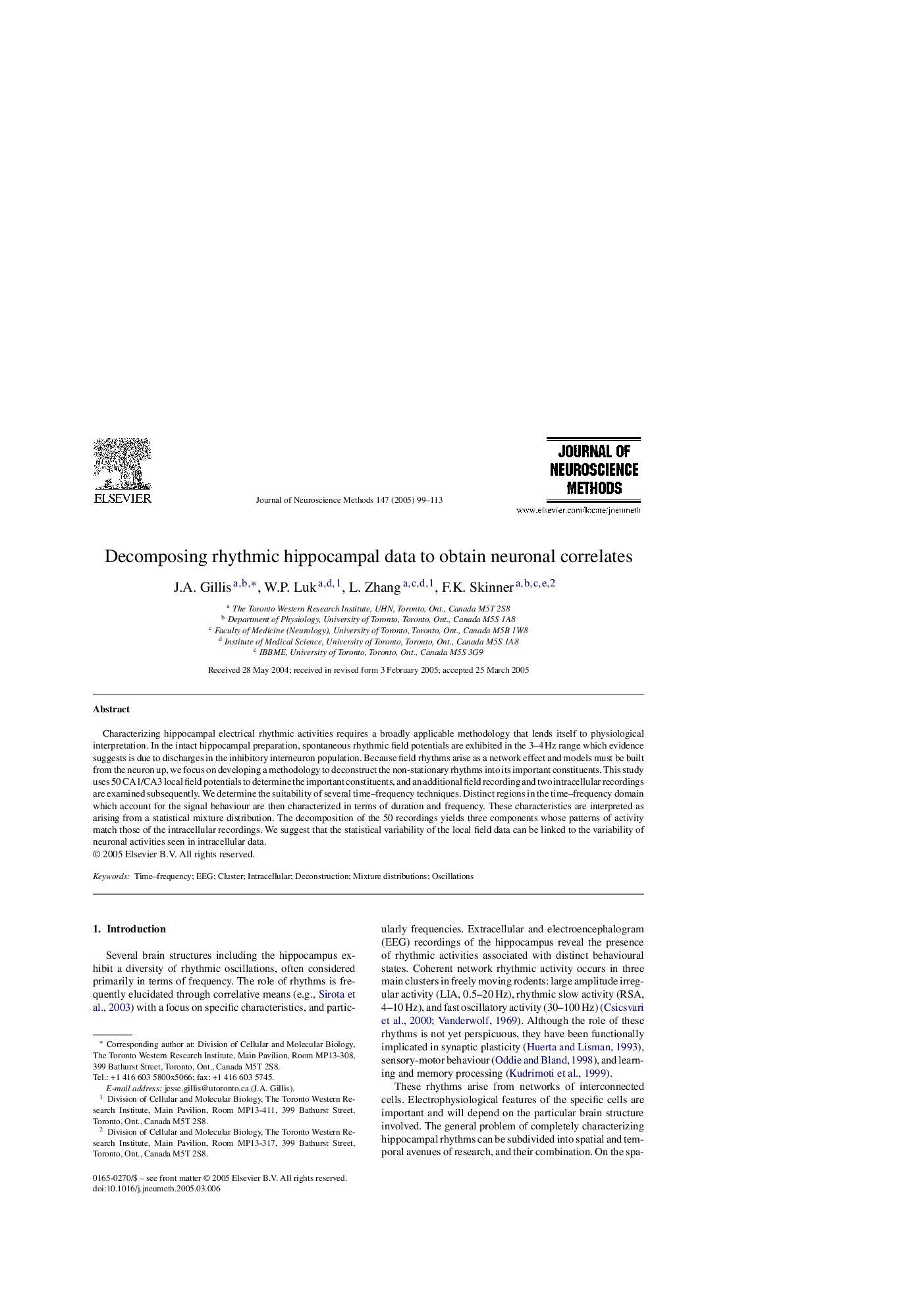| Article ID | Journal | Published Year | Pages | File Type |
|---|---|---|---|---|
| 9424147 | Journal of Neuroscience Methods | 2005 | 15 Pages |
Abstract
Characterizing hippocampal electrical rhythmic activities requires a broadly applicable methodology that lends itself to physiological interpretation. In the intact hippocampal preparation, spontaneous rhythmic field potentials are exhibited in the 3-4Â Hz range which evidence suggests is due to discharges in the inhibitory interneuron population. Because field rhythms arise as a network effect and models must be built from the neuron up, we focus on developing a methodology to deconstruct the non-stationary rhythms into its important constituents. This study uses 50 CA1/CA3 local field potentials to determine the important constituents, and an additional field recording and two intracellular recordings are examined subsequently. We determine the suitability of several time-frequency techniques. Distinct regions in the time-frequency domain which account for the signal behaviour are then characterized in terms of duration and frequency. These characteristics are interpreted as arising from a statistical mixture distribution. The decomposition of the 50 recordings yields three components whose patterns of activity match those of the intracellular recordings. We suggest that the statistical variability of the local field data can be linked to the variability of neuronal activities seen in intracellular data.
Related Topics
Life Sciences
Neuroscience
Neuroscience (General)
Authors
J.A. Gillis, W.P. Luk, L. Zhang, F.K. Skinner,
